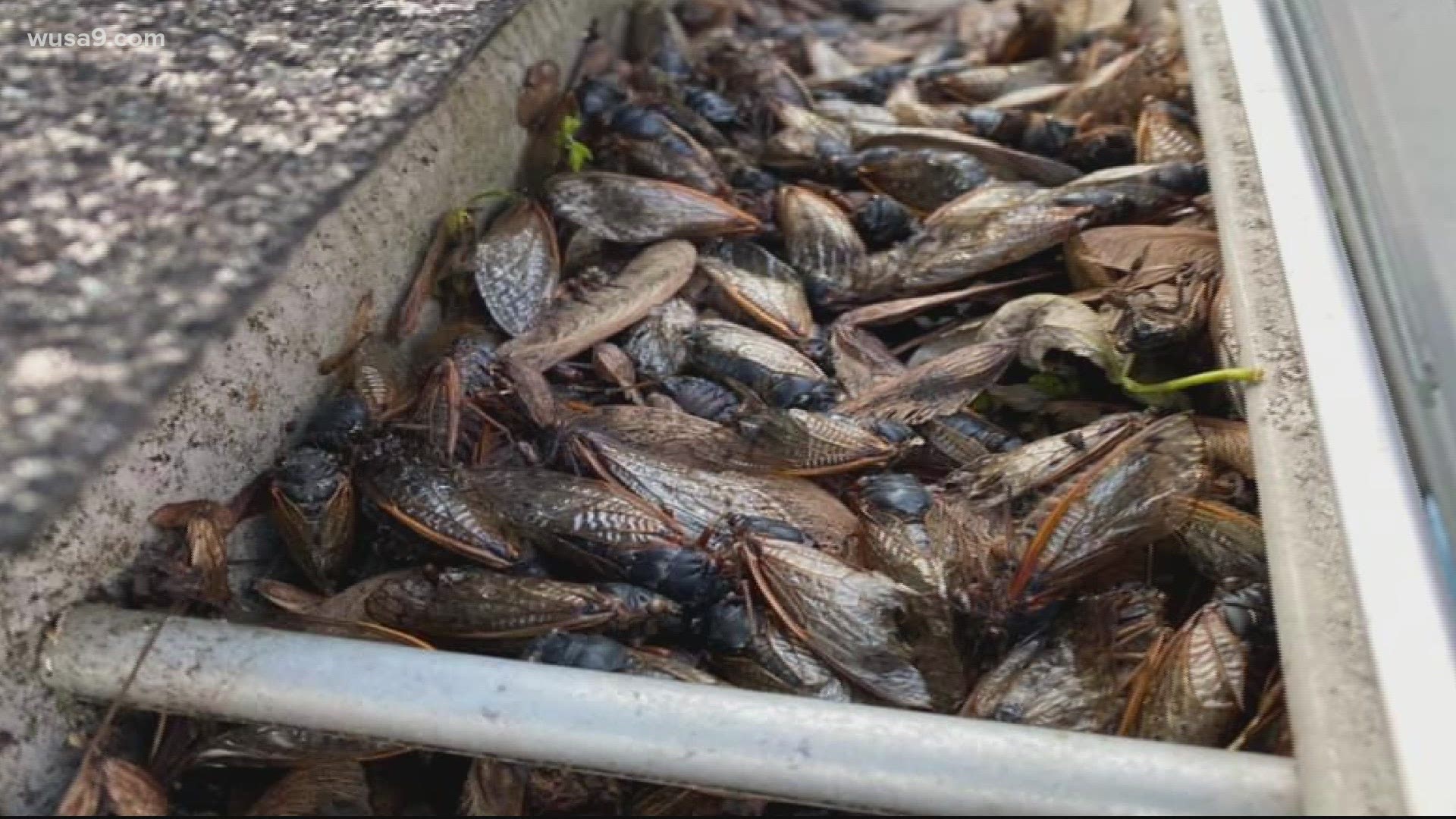HERNDON, Va. — A leading insect researcher said Friday that the great cicada invasion of 2021 is now about over.
But the after effects have just begun, said Dr. Gene Kritsky, dean of Mt. St. Joseph University in Cincinnati, Ohio.
"The females have laid eggs and surely if that happens both males and females will die," Kritsky said.
"And we're seeing that population decline right now, and it's happening in really big numbers."
Kritsky reported the decibel level at research sites has dropped from a high of 94 db to near normal background noise.
But the waning of the cicadas has come with new issues, according to Jeff Herge, a real estate agent and home repair expert in Herndon.
Herge has posted photos on Twitter of masses of dead cicadas clogging the gutters on his northern Va. home.
“I wanted to wear an N-95 mask to kind of cover up the smell because even if you can handle stuff visually, sometimes the smell will hit you and just knock you in the gut,” Herge said after completing the messy job.
Herge also reports that he is noticing the ends of tree branches are dying off.
Dr. Kritsky says both developments are actually beneficial.
The masses of rotting cicada bodies return immense amounts of nutrients to the soil, he said.
The damage to trees is caused by female cicadas shredding the bark on small twigs, according to Kritsky.
However, the effect, known as flagging, is actually similar to pruning, Kritsky said.
"This can be beneficial to the trees in the long run, but doesn't look nice now," he said.
Krtisky cautioned that the exception will be for small trees or saplings that are less than 4-feet tall, which can die from the damage.
It is likely too late to save such saplings that were not covered with protective netting early in the invasion, Kritsky said.
In 6 to 8 week,s billions of tiny cicada nymphs will hatch in the trees, according to Kritsky.
The nymphs with almost immediately rain from the trees to the ground and bury themselves in the soil as quickly as possible.
"They'll feed on grass roots for the following weeks and then by New Year's Day, they'll be eight to 12 inches below the ground sucking on a tree root. And that's where they're going to be for the next 17 years," Kritsky said.

